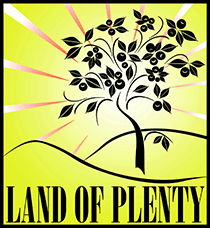Winter Work and the Snowy Path Ahead
I am pleased to report that fall work wrapped beautifully and I am ahead in my business projections. As I gaze out upon the snow-bound Jamaica Plain, I am grateful for the unexpectedly lucrative month of December and looking forward to the winter work to come. Maybe by next year I will be in a position to take December and January off, but for now the work continues. Thanks to my clients and my many friends who provided referrals, services, advice, and the advice to make my early successes possible. I look forward to hearing from you and working with you in 2010.
Here is a reminder for those of you whose thoughts of all things good and green are buried along with your gardens in the January snows. Winter is the best time for pruning many types of ornamental trees and shrubs. Most of the fruit trees that grow in this region benefit from structural pruning during this time of year, especially if they are still establishing. I was able to get a jump on some of this work for a southern NH client in late November.
The client owns 20 acres stretched across a scenic hilltop in the shadow of Mount Monadnock. I was hired to rehabilitate and expand a small fruit orchard mainly consisting of apple trees. The client was concerned that the trees were stressed due to deer browsing. They considered building a fence around the orchard, but found the cost to be prohibitive. Instead, we decided to prune the branches of the dwarf and semi-dwarf trees above the browse-line, where possible. As an added precaution, I drilled and hung Dial soap in the centers of all of the trees. This method is anectdotally reputed to be the one of the most effective deer browse deterrent, a claim which is supported by at least one case study (although the evidence is based on two trials on two trees). At less than $1 per tree and with a life span of at least six months, this is clearly the most cost effective method that you could choose.
The property manager planted several 4″ caliper apple earlier in the fall, which could not be pruned. The Dial soap will be put to the test on these trees. It is best to wait two years after planting before pruning newly planted trees in order to encourage the establishment of a strong root system. Any damaged branches that we find will be pruned in the spring.
I completed pruning the 20+ mature dwarf trees and another 28 blueberry bushes in a marathon day that started at 6:30am and continued until the last bit of light faded from the sky around 5:45pm. In my preoccupation with the ever-ticking clock and limited November daylight, I failed to take any photos of the orchard that day, but here is a shot that the client took that is typical of the end result.
Because deer cannot freely stand on their hind legs, branches that are above 4′ are clear of the browse line. This means that most of the fruit on the tree will be within reach of an adult harvester from the ground or small ladder. A pole picker is the safest solution for picking fruit at the tops of the trees while keeping your feet firmly planted upon the source of gravity, although pole pickers can be fatiguing and awkward to use. I would not recommend it if you have back problems.
In addition to the deer browse, I found that many of the trees were suffering from fireblight infections in their trunks and branches. Infected wood is incurable and, as the name suggests, resembles charring of the wood. The only treatment for the infection is amputation, so it is only a matter of time once the infection enters the trunk of a tree. I flagged several trees with trunk infection for removal and carefully pruned infections out of several other trees.
The best approach to the disease is prevention and the best approach to prevention is planting selection. There are many fireblight-resistant varieties of apples and pears available on the market, but many of the most popularly recognized cultivars (the grocery store varieties) are highly susceptible to the disease. For this and many other reasons (flavor being high among my priorities) I do not recommend planting most varieties of apples and pears that you typically find in the supermarket. Unfortunately, this means that most roadside nurseries do not sell disease-resistant stock. I will be giving the client a list of suitable varieties to expand the orchard once the soil test results come back from the UMass Extension lab. Fortunately, the client is interested in the idea of growing out bare-rooted specimens on her property, which means that selections will be plentiful and inexpensive. My favorite nurseries for disease-resistant dwarf and semi-dwarf fruit trees include Miller’s Nurseries in New York State and Raintree Nursery in Washington State.
If you or someone you know in the Boston area is looking for pruning services (for trees up to 20′ in height, including ornamentals and young canopy trees), consultations, lessons on their home orchard this winter, or planning ahead for spring planting please send me an email!






